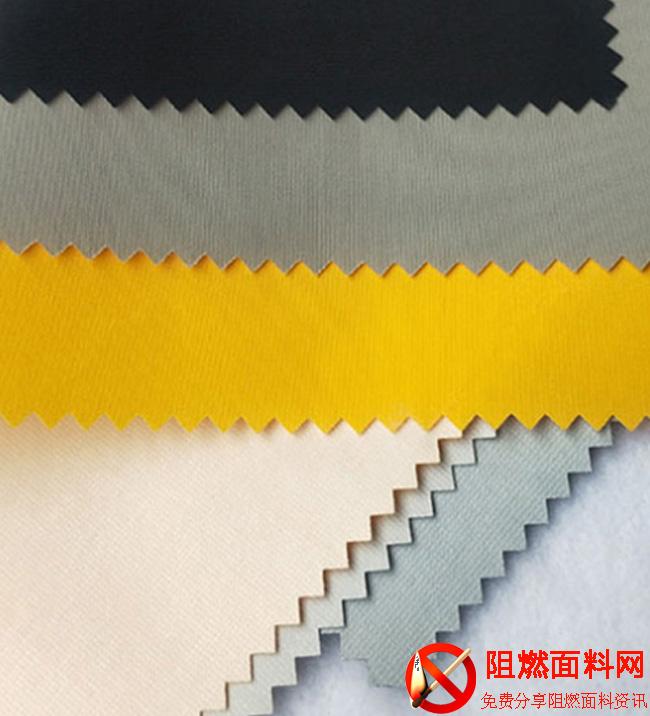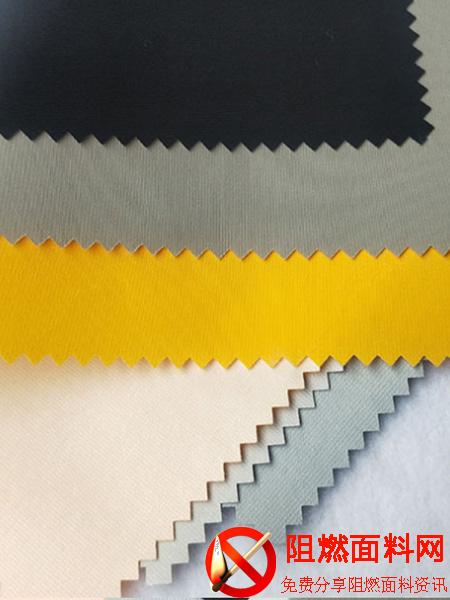Do you know all these conventional textile fibers?
Do you know all these conventional textile fibers?
Viscose fiber
Part.1
1. Ordinary viscose fiber:
(1) The cut length of viscose cotton type short fiber is 35~40mm, and the fineness is 1.1~2.8dtex (1.0~2.5 denier). It can be blended with cotton to make fine cloth, validin, gabardine, etc.
(2) Viscose wool type short fiber, cut length 51~76mm, fineness 3.3~6.6dtex (3.0~6.0 denier), can be spun purely or blended with wool, and can be made into tweed, coats, etc.
2. Rich and strong fiber:
(1) It is an improved variety of viscose fiber.
(2) Pure spinning can be used to make fine cloth, poplin, etc.
(3) Blended with cotton, polyester, etc. to produce various clothing.
(4) It has good alkali resistance, and the woven fabric is stiff and will not shrink or deform after washing. It is relatively durable.
3. Viscose yarn:
(1) Can be used for clothing, quilt covers, bedding and decorations.
(2) Viscose yarn and cotton yarn are interlaced to make feather yarn and thread quilt top.
(3) Viscose silk and silk are interwoven to make georgette, brocade, etc.
(4) Viscose threads are interwoven with polyester and brocade filaments to make crystal satin, antique satin, etc.

4. Viscose strong yarn:
(1) The strength is twice as high as ordinary viscose yarn.
(2) Twisted and woven into cord fabric, used for automobile, tractor and carriage tires.
polyester fiber
Part.2
1. Short fiber:
It can be spun purely, but is usually blended with cotton, wool, viscose and other fibers to improve its wearing properties.
(1) Cotton fiber
1.65~2.2dtex(1.5~2.0D)×35~40mm
Mainly polyester-cotton blends, with a blending ratio of 65% to 67% polyester and 35% to 33% cotton. It can also be blended in other proportions.
High strength and low elongation type:
High strength, small elongation, good spinnability of cotton, high quality index of spun yarn, crisp, smooth and good shape retention of the fabric. It is mainly used for blending with cotton. Depending on the specifications, it can be spun into various light and smooth clothing materials. , high-strength knitting yarn, sewing thread, etc.
Low strength and high stretch type:
The fabric has good dyeability, soft hand feel, abrasion resistance, impact resistance, not easy to pilling, good wearing performance, but low strength and many yarn breakages. It is mainly used for blending with wool and viscose.
(2) Medium and long type
2.2~3.3dtex(2~3D)×51~76mm
It is mainly used for blending with wool-type viscose fiber. The blending ratio is roughly the same as the cotton-polyester blending ratio. In order to reduce the price of finished products and fabrics, viscose fiber can be increased to 50%. Fabrics used for sewing outerwear, casual clothes, shirts, skirts, sportswear, etc.
(3) Hair type
2.75~4.4dtex(2.5~4D)×35~40mm
Mainly used for blending with wool. The blending ratio is: polyester 45%~55%, wool 55%~45%. The fabric is mainly used for sewing outerwear. In addition to the above uses, polyester short fiber can also be combined with other natural fibers and natural fibers. Blended with scraps and other fibers, it can also be blended with two other fibers to prepare a three-in-one fabric. With the development of new varieties, some of the shortcomings of polyester are being improved and its uses are broader.
2. Filament
Including pre-oriented yarn (POY) and drawn yarn (DTY), which are mainly used to process into low elasticity yarn for weaving, and can also be directly woven or knitted.
(1) Conventional silk
110~165dtex (100~150D) or above, suitable for making all kinds of wool-like fabrics and other medium-thick clothing materials
78.4~82.5dtex (68~75D) Suitable for general clothing materials
33~55dtex (30~50D) Suitable for making various thin imitation silk fabrics, underwear materials, quilt tops, decorative fabrics, etc.
(2) Special-shaped wire
The cross-section of the silk is different from the conventional circular cross-section. There is a triangular cross-section with sufficient mercerization, which is suitable for making various imitation silk fabrics; the multi-leaf cross-section has good covering properties, the fabric is soft, elastic, and has a strong sense of wool shape, so it is suitable for processing wool-like products; Hollow-shaped cross-section fibers are light, soft, have good thermal insulation properties and good resilience. They can be used to imitate down and be used as batting, batting, pillow cores, etc.
(3) Air textured yarn
The individual filaments are entangled with each other, forming a textured yarn with small loops of filaments on the surface of the yarn. This yarn not only retains the advantages of polyester such as high strength, good wear resistance, crisp fabric, easy washing and quick drying, but also overcomes the shortcomings of polyester low elasticity such as aurora, waxy feel and poor air permeability that cannot be overcome. It can be woven and knitted directly, eliminating the need for curling, cutting, packaging, and then sending to the textile factory for multiple processes such as blow cleaning, steel wire, drawing, roving, and spun yarn. The fabric produced can rival fine yarn in terms of comfort, silk-like appearance, bulkiness and covering performance. Fabrics made of imitation wool not only feel and look like pure wool fabrics, but are also of high quality and low price.
(4) Network silk (starch-free silk)
The cohesion between the monofilaments is high and the bundling properties are good. It can be directly woven or knitted, eliminating the need for twisting, sizing and other processes. Depending on the fabric, silk, Paris, gabardine, patterned tweed, etc. can be woven.
(5) Mixed fiber yarn (colorful yarn)
Utilizing the various characteristics of synthetic fibers, modified, textured, multifilament or chemical fibers with different components or different cross-sections, different shrinkage rates, and different glosses and colors are produced in the form of random, block, sheath-core, juxtaposition, etc. Mixed together or twisted togetherCharacteristics and applications
Part.8
Lyocell is a new, environmentally friendly fiber that is hailed as the “green fiber of the 21st century” by the international textile industry. Its excellent properties of natural fibers and synthetic fibers allow the product to combine the moisture absorption and breathability of cotton, the feel and luster of silk, the strength of chemical fibers, and the comfort of wool. Its great affinity with natural fibers enables the development of a variety of products. High value-added woven and knitted products have extremely broad market prospects.
Characteristics of Lyocell (Tencel short fiber, Newcell filament yarn) fiber and yarn:
1. It has excellent characteristics of cellulose fiber. Lyocell fiber fabric has a refreshing feel, good moisture absorption and breathability, and has the drape of silk. The touch can change from cotton to wool, silk, and various other feelings.
2. High strength. The dry strength of Lyocell fiber is close to that of polyester fiber, while the wet strength only decreases by 15%, which is far superior to viscose fiber.
3. Fibrillation. When Lyocell fiber is in a wet state, small fibrils are pulled out of the fiber surface under mechanical force, which can change the properties of the fabric surface. Through enzyme treatment, longer fibrils are removed and secondary fibrillation is performed to obtain a peach skin effect.
4. Good dimensional stability. Lyocell fiber fabric has low shrinkage and good washability.

Technical indicators of Lenzing Lyocell:
Fineness: 0.9/1.3/1.7/6.7dtex
Quality length: 34/38mm Strength: 40-42cN/tex
Wet elongation 15-17% Wet strength 85% BISFA wet modulus 9-10 cN/tex
Lenzing Lyocell has developed the following product lines:
Lenzing Lyocell MICRO (Lenzing Lyocell microfiber), Lenzing Lyocell LF (Lenzing Lyocell
Ser LF fiber), Lenzing Lyocell FILL (Lenzing Lyocell FILL fiber), etc.
The main purpose:
The development of Lyocell products roughly includes six product series: denim, suits, casual wear, yarn-dyed fabrics, shirts and underwear, and knitting.
Acrylic fiber and its uses
Part.9
Acrylic fiber – a modified acrylic fiber, which is a copolymer of acrylonitrile monomer and vinyl compounds containing flame retardant elements. It has a wool-like feel and high flame retardancy, and is acid and chemical resistant. . As a functional fiber, this fiber has been widely used in Japan, Europe and the United States for home textiles, protective clothing fabrics, decorative textile materials, etc.
Fiber type: cotton type, wool type, high shrinkage type
Fineness: 1.5DTEX-20DTEX
Length: 28-120mm
Oxygen limiting index: ordinary type 28-30
High flame retardancy: 30-34
Gloss: glossy, semi-matt, matt
Acrylic chlorine fiber product features:
Excellent flame retardant properties. ——The natural flame retardant properties of the fiber enable the material to pass the stringent flame retardant requirements of various countries. Even if it is blended with other natural fibers, it still has unchanged flame retardant properties.
Natural, soft feel. ——Acrylonitrile fiber has softness, natural feel, water absorption performance and comfort similar to other natural fibers.
There is no melting or shrinkage during combustion. ——There is no shrinkage or melting phenomenon when nitrile chlorine fiber clothing fabric is burned, but only carbonization, which effectively prevents skin burns caused by melt droplets.
The material has good chemical stability – resistant to acids, alkalis and other general organic and inorganic drugs, so it is used as filter cloth materials, special protective clothing materials and other industrial materials.
The material has good dyeing properties – bright color, good color fastness, sun resistance, no obvious degradation by sunlight, and can be used for parasols, etc.
Mainly used for: interior decoration, curtains, seat covers, and aviation blankets of various cars, trains, ships, airplanes, hotels, and conference rooms.
Polychloropropylene fiber and polychloropropylene fiber
Part.10
Polyvinyl chloride fiber is the product name I used for polyvinyl chloride fiber. The international product names are Rowell, Peceu (PCU), etc. It is one of the main varieties of chlorine-containing fiber.
The raw materials for manufacturing chlorine fiber are easy to obtain and the cost is low. Wet or dry spinning methods can be used.
Fiber specific gravity: about 1.4g/cm3
Fiber strength: approximately 2.64cN/dtex
Elongation at break: 12~28%
It has good elasticity, good flame resistance, wear resistance and weather resistance, and its aggregate has good warmth retention properties.
Main defects: Very sensitive to heat. In boiling water, the fiber can shrink significantly, the strength decreases, and the elongation increases to 150~280%, so the fabric cannot withstand ironing, has poor hygroscopicity, is difficult to dye, and is easy to produce static electricity.
Main uses: flame-proof sofa cloths, mattress cloths and other interior decoration products, chemical-resistant overalls, filter cloths, or processed into knitwear and warm cotton fillings, etc. In addition, the chlorine fiber can be used to produce a large amount of anions through friction, which has a certain therapeutic effect on the human body, and can be made into health care products.
The United States calls PVC fiber “Salon”, which mainly contains vinylidene chloride (more than 80%). PVC fiber has stable chemical properties and is difficult to dye. Its specific gravity is the heaviest among current textile fibers, at 1.7g/ cm3, the moisture regain is 0%, and the moisture absorption capacity is poor; the fiber breaking strength is 2.12cN/dtex, and the elongation is 15~25%; PVC has good flame retardancy and does not support combustion. Polypropylene fiber comes in two types: filament fiber and short fiber.
Poor; fiber breaking strength is 2.12cN/dtex, elongation is 15~25%; PVC has good flame retardancy and does not support combustion. Polypropylene fiber comes in two types: filament fiber and short fiber.







